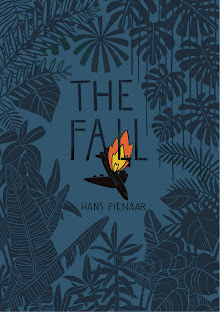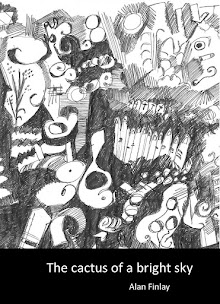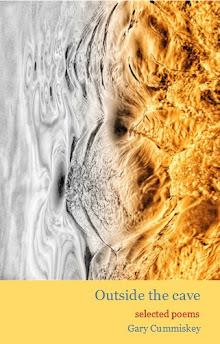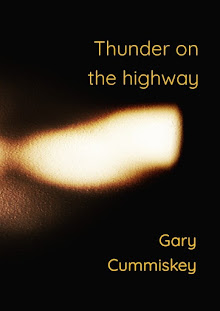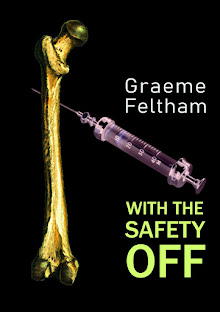Aiyo!, a chapbook of three tales of terror by Pravasan Pillay, is soon to be published by Dye Hard Press! 48 pages.
Watch this space ..
Independent literary publishing, commentary, reviews, art
Aiyo!, a chapbook of three tales of terror by Pravasan Pillay, is soon to be published by Dye Hard Press! 48 pages.
Watch this space ..
The following is the English version of an introductory talk I gave at a surrealist poetry event I participated in the Dai Art Gallery, Zamalek, in Cairo, on 14 December, 2022. The event was hosted by Mohsen L Belasy and Ghadah Kamal Ahmed.
An Arabic translation of the talk appears in Sulfur 'Surrealist Jungle'.
What is surrealist poetry?
It was about a
month ago that Mohsen asked me to give a talk for this evening on ‘What is
surrealist poetry?’ My reply at the time was that this was an almost impossible
question to answer comprehensively, and that I was not sure if I could answer
it. Now it is a month later, and I still do not have a comprehensive answer.
And besides, I am suspicious of answers, and much prefer questions.
What is surrealist poetry? Well, among the French-language poets, we may have read Breton, Éluard, Péret and the great post-Second World War poet Joyce Mansour, who was Egyptian.
 |
| Joyce Mansour |
When we read their work we should get an idea of what constitutes surrealist poetry. And among the English poets, if we read the early work of David Gascoyne or Philip O’Connor, or that of Roger Roughton or Roland Penrose, we may get an idea of what constitutes surrealist poetry to the English. And then in the US, there is the work of the great Philip Lamantia – ‘the voice that rises once in a hundred years’ – as Breton said about him, or the work of the contemporary surrealist poet Will Alexander, and also the late Ronnie Burk. Unfortunately I cannot speak about surrealist poetry in Latin America, other European countries such as Spain, Portugal or Romania, or even countries such as Egypt, because I am not knowledgeable enough.
 |
| Philip Lamantia |
But to get back to the question. For me, a problem with trying to explain something, to define it, is to risk limiting and restricting it – and that is the exact opposite of what surrealism has always been about. If we say, for example, as is usually said, that surrealist poetry is characterised by dream imagery, then we are saying that surrealist poetry should contain dream imagery. But is that true? And if we say that surrealist poetry is the result of automatic writing, then we are saying that surrealist poetry must have been written quickly and without conscious intervention or revision. But we know that is not true – Breton himself rejected automatic writing as far back as 1930. And neither Aragon, Char, nor Éluard – the great poets of surrealism – ever practised automatic writing.
For myself, as much as I admire Breton, Éluard and Péret among the French-language surrealist poets, I much prefer the work of the more borderline or renegade surrealists – poets such as Artaud, Prévert, and some of the members of Le Grand Jeu, such as René Daumal and Roger Gilbert-Lecomte. None of these poets produced poetry that can be immediately recognised or labelled as surrealist. That is because their poems do not have the outward characteristics of what is considered surrealist poetry.
 |
| René Daumal |
And in the post-Second World War period, moving into the 1950s and 1960s, I admire the work of the PANic movement – Arrabal, Jodorowsky, and Topor. There is the story of how Jodorowsky travelled from Chile to France determined to rescue surrealism, and when he finally met Breton, he was dismayed to find that the great leader of surrealism did not like rock music (actually Breton did not like any music!), science fiction, or comics. And so Jodo decided to form PANic.
 |
| Bob Kaufman |
.jpg) |
| Ira Cohen |
And then what do we make of the poetry of the US surrealist Ted Joans, who declared ‘Jazz is my religion, and surrealism my point of view’? As much as many of his poems are dedicated to surrealists, such as Joyce Mansour, with whom he collaborated, or reference surrealism or surrealists – a fairly famous one is about Breton – they generally do not have the characteristics of what we would expect from ‘surrealist poetry’. They are closer to jazz poetry, and indeed, Joans’s poetry seems more influenced by jazz than by surrealism. He is as frequently referred to as a jazz poet as he is referred to as a surrealist poet. He is seen by some as one of the fathers of spoken-word poetry. Yet Breton called him ‘the only authentic African-American surrealist of the hippie generation in America’.
 |
| Sinclair Beiles |
Incidentally, Sinclair once gave a poetry reading here in Egypt, at a Grateful Dead concert, when they performed at the pyramids in Giza in 1978.
 |
| Ted Joans |
In closing, I would like the quote the words of Ted Joans – words he uttered when I met him in Johannesburg in early 1994. Those words were: ‘The fantasy fades, but the surrealism remains’. He did not explain what he meant by that, but for me it is a matter of pointing out that the outward characteristics of ‘typical’ surrealist poems – with images of oranges eating horses and eyebrows climbing over bannisters (and those are my images, by the way, so you can’t use them!) –– will perhaps not fade as such, but become, in the words of Sinclair, ‘beautiful seashells devoid of life’. But the substance of surrealist poetry –– the spirit of surrealism – will remain.
The new year is picking up, and we are busy proofreading Pravasan Pillay's latest title, Aiyo!, a chapbook of three tongue-in-cheek horror stories. 48 pages.
You'll never look at a bunny chow the same way again!
Watch this space!



